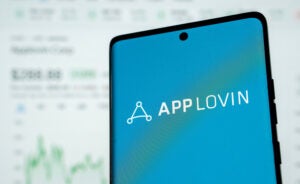 “On TV And Video” is a column exploring opportunities and challenges in advanced TV and video.
“On TV And Video” is a column exploring opportunities and challenges in advanced TV and video.
Today’s column is written by Randy Cooke, vice president of programmatic TV at SpotX.
In media, our past is dominated by the ongoing discussions of our future. From the moment the first TiVo shipped around the turn of the millennium, the TV industry has always been on the verge of some something that promised to change TV, usually within a five-year window.
Over time, this five-year trap pulled the industry into a reactionary form of self-governance, an adhocracy of incrementalism with solutions that just manage to get everybody through the next agency planning cycle. Just look at the waves of obsession to hit the industry since that moment when TiVo changed TV: commercial minute ratings, Live-only, advanced TV, interactive TV, addressable TV, over-the-top and even refrigerators.
No matter how the industry chose to address its most immediate concerns, the long-term sustainability of policy was never given much consideration. It was just assumed that it would all be different in five years. Remember that time in 2006 when Nielsen predicted the diary would be gone by 2011?
There has been no shortage of intense moments in TV over the last couple decades, but for many in this business, “now” feels different. Maybe five years ago, we were actually right, and the present is the five-year future of our past.
It wouldn’t be hyperbole to suggest a sense of anxiety seems to be spreading rapidly across the modern media field, largely the product of an industry obsessing over the wrong things. We view technology with a jaundiced eye in media because this is a people business.
But TV as an industry does not end at the doorstep of ad tech. From programmatic infrastructure to modern ad-serving capabilities, ad tech is giving media and audience owners the power to develop ad markets, limited in scale only by one’s imagination.
Consider the virtues of a brand having the ability to define and buy TV to engage its audience in the ways it wants. This could be embraced as a sustainable business of portfolio packaging to meet customers’ most detailed tactical objectives. That is powerful, enterprising leverage in this multibillion-dollar video marketplace, and it’s hard to do at scale without an abyss-like view on market intelligence.
With billions of daily ad opportunities in live, linear and on-demand TV content available today across skinny bundles, TV Everywhere, OTT platforms, direct-to-consumer apps and multimedia devices, audience is everywhere.
Convergence, as it turns out, appears to be the point at which every medium, device, publisher, content and audience owner vies for a slice of the same pie, even if currencies, standards and expectations are not universal. Everything and anything can be a KPI.
Herein lies the efficiency of programmatic infrastructure, monetizing high-volume ad channels where the intersection of content and consumer at a device level is instantly discoverable. TV crossing the figurative threshold into programmatic should be understood simply as table stakes, pardon the mixed metaphor.
Indeed the dust of confusion and white-knuckling anxiety will probably subside after next year’s Upfronts. We’ll likely re-categorize today’s TV markets into gardens that put us at ease with what this medium has come to be. Much like how we’ve historically segmented TV markets across upfronts, scatter, syndication, spot and zone cable – the “swimlanes” of $70 billion in TV ad spend this year – we’ll find sustainability and balance.
We like swimlanes in TV. In the interest of protecting a culture of restrictive partnerships and general aversion to substantive industrial collaboration, we’ve scribed our swimlanes in ink.
But our swimlanes are no longer running in parallel, which says a lot about the state of the TV industry, not the least of which is the obvious need to find a better metaphor.
TV is no longer a homogenous business. It must be thought of in multiple dimensions, starting with the core ad channels that will individually and complementarily sustain the TV ad business into perpetuity: content and audience.
Are you buying a program based on some audience index, or are you buying an audience attribute, contextualized by content? The answer to that question is not inconsequential.
The ability to efficiently execute in either or both the audience and content markets will be the secret sauce of TV’s winners. Those who understand the value of their content and audience assets at an enterprise level will be the ones for whom the dust settles first.
All due credit to those who predicted – five years ago – that we’d be at this juncture.
Follow SpotX (@SpotX) and AdExchanger (@adexchanger) on Twitter.













